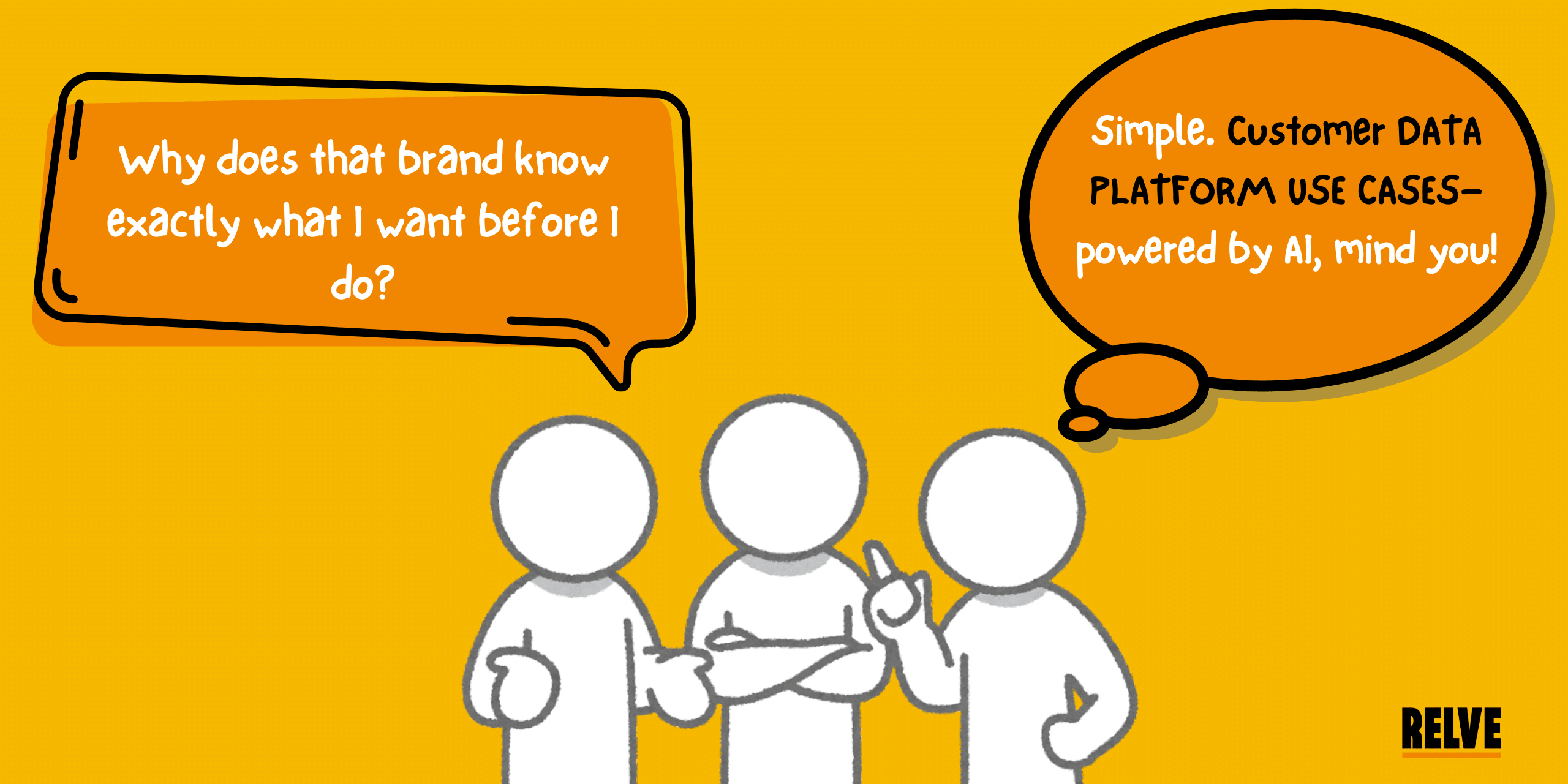Companies that utilize customer data platforms (CDPs) report that 89% of marketing leaders consider personalization essential, and 73% are leveraging AI-driven personalization to drive growth. Some are even seeing revenue growth at 2.9× vs businesses without CDPs.The data makes it clear – organizations are aggressively working on optimal customer data platform use cases to gain an unfair advantage over the competition.
Imagine understanding each customer’s journey in real-time, anticipating their needs, and delivering personalized experiences that result in 38% more spending per consumer. From abandoned carts to loyalty lifecycles, AI-enabled customer data platform use cases transform fragmented data into unified, high-impact campaigns, resulting in an 802% ROI over three years and $26 million in new sales for some CDP adopters.
In this post, we’ll explore 10 standout CDP use cases – from real-time triggers to churn prevention – highlighting how AI-powered CDPs deliver personalized, meaningful, and measurable customer experiences.
Let’s dive into strategies every marketer and CX leader should know.
Customer Data Platforms Explained
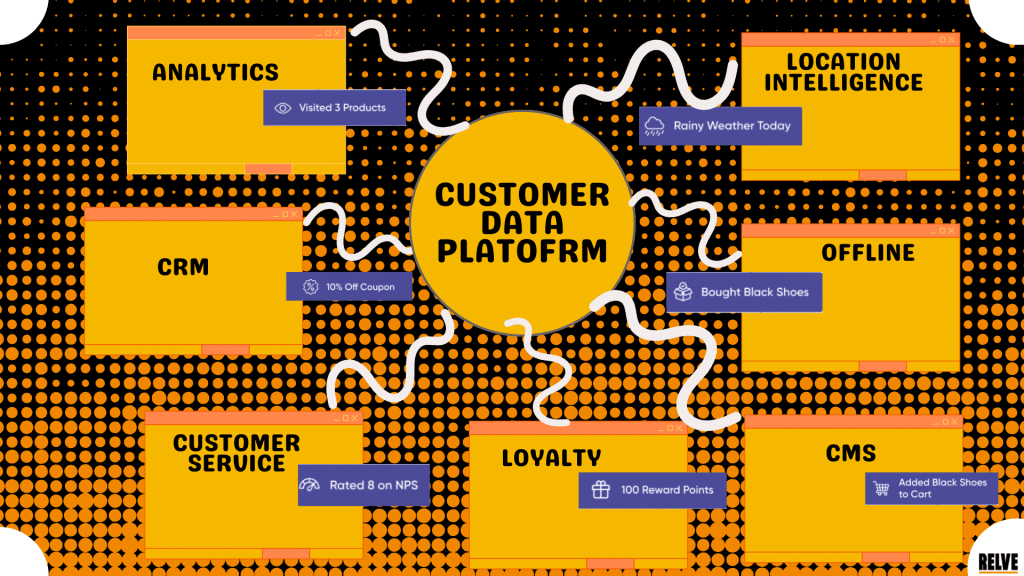
A Customer Data Platform (CDP) is a centralized hub that collects, unifies, and activates customer data across channels and systems. It ingests first-party data, such as website behaviour, mobile app events, and CRM records, and stitches them into a unified customer profile. With AI processing layered on top, CDPs generate insights used to tailor messaging, predict behaviour, and improve campaign performance.
Why does this matter?
Contextual relevance drives revenue. Shoppers expect tailored offers, proactive support, and consistent experiences across email, mobile, web, and ads.
Without a CDP, brands operate in silos. With one, they can orchestrate meaningful journeys – delivered intelligently at scale.
10 Customer Use Cases for Delivering the Best Experiences
Here are ten compelling AI‑driven customer data platform use cases that illustrate the transformative potential of CDPs:
1. Real-time Behavioural Triggered Messaging
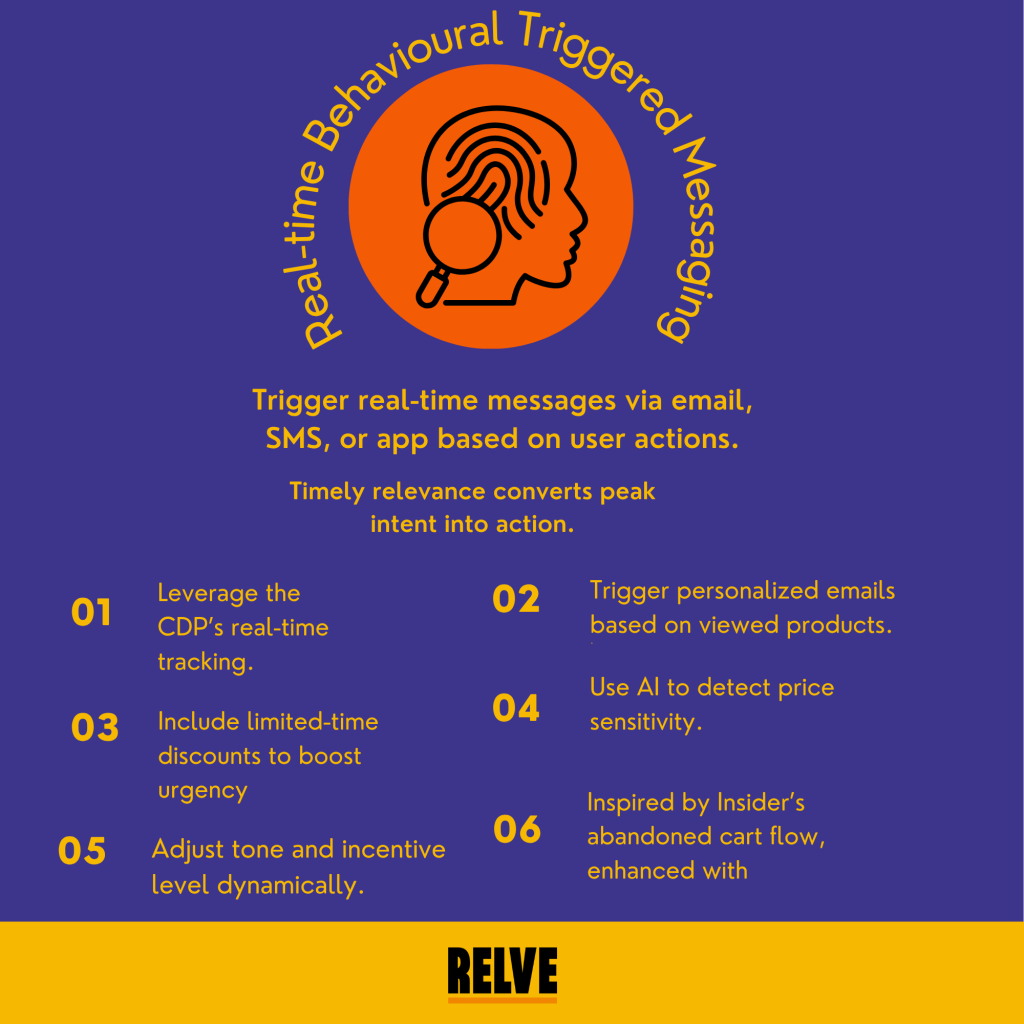
What it is:
Send automated messages – email, SMS, or in‑app – based on customer actions in real‑time (e.g., browsing a product, abandoning a cart).
Why it matters:
Immediate relevance capitalizes on intent. A timely offer or discovery message drives conversion when interest is at its peak.
How to use CDP insights:
Utilize the CDP’s real-time tracking to trigger a personalized email featuring the exact product viewed, accompanied by a limited-time discount. AI predicts if the user is price-sensitive and tailors messaging tone and incentives accordingly.
Inspired by Insider’s “Abandoned cart” scenario but layered with AI to tweak the incentive level dynamically.
Example:
A visitor browses Nike’s running shoes category but leaves without making a purchase. A CDP captures this behaviour and instantly triggers an email or push notification that spurs the user into action.
The notification can be:
- “Still thinking it over? Here’s 10% off your next pair of running shoes.”
- Personalized recommendations from the same product line.
Industry: Retail / E-commerce
Platform Feature: Real-time data capture and event-based automation.
2. Predictive Churn Prevention
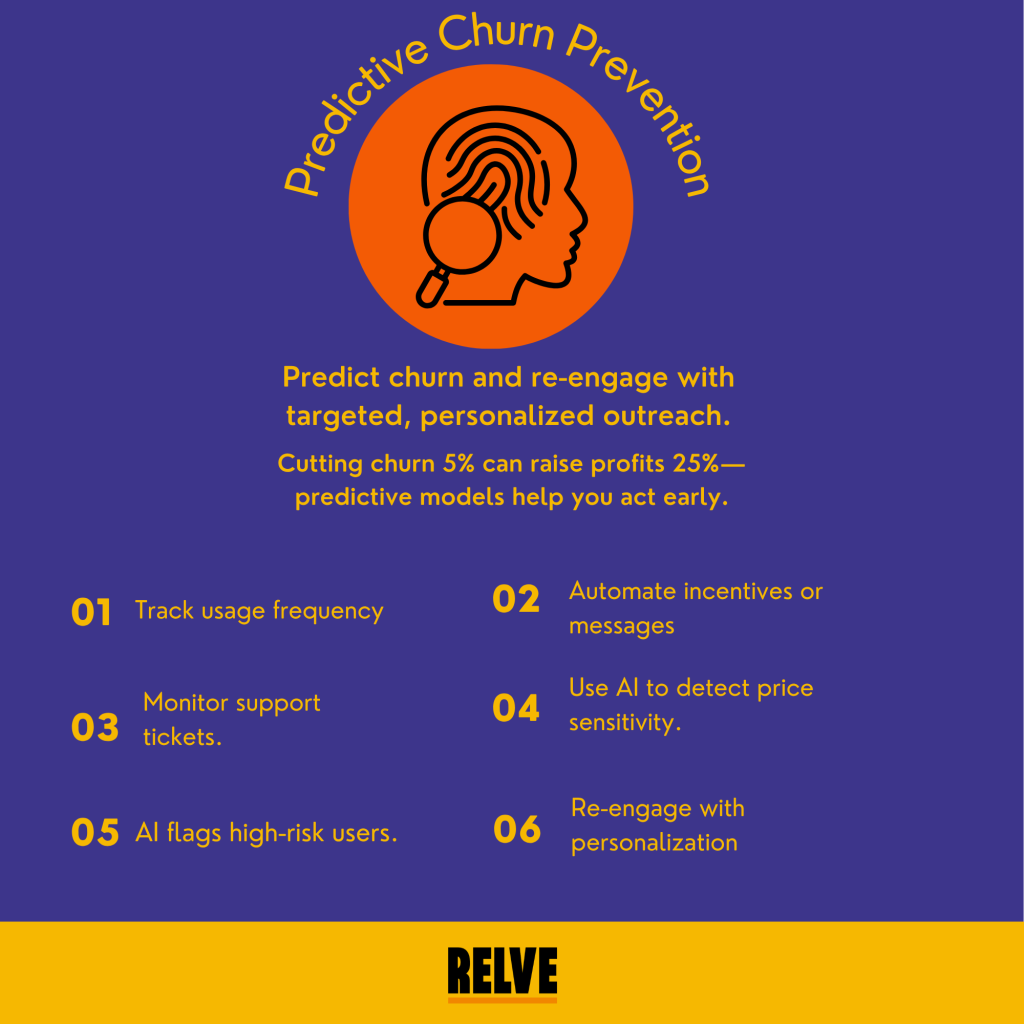
What it is:
Identify customers likely to churn using predictive scoring, and then proactively re-engage them with targeted offers, relevant content, or personalized outreach.
Why it matters:
Reducing churn by just 5% can boost profits by up to 25%. Predictive models let you act before customers slip away.
How to use CDP insights:
Combine usage frequency, support tickets, and NPS data to inform your decision. AI flags high-risk users and automates personalized incentives or loyalty messaging to re-engage them.
Example:
A SaaS company like HubSpot notices a drop in product usage and engagement from a customer. The CDP flags them with a high probability of churn.
An automated email campaign is launched, offering:
- A dedicated success manager
- A short survey to capture pain points
- A free month of upgraded features
Industry: SaaS / B2B
Platform Feature: Predictive scoring with AI-based retention triggers.
3. Next-best Product Recommendations
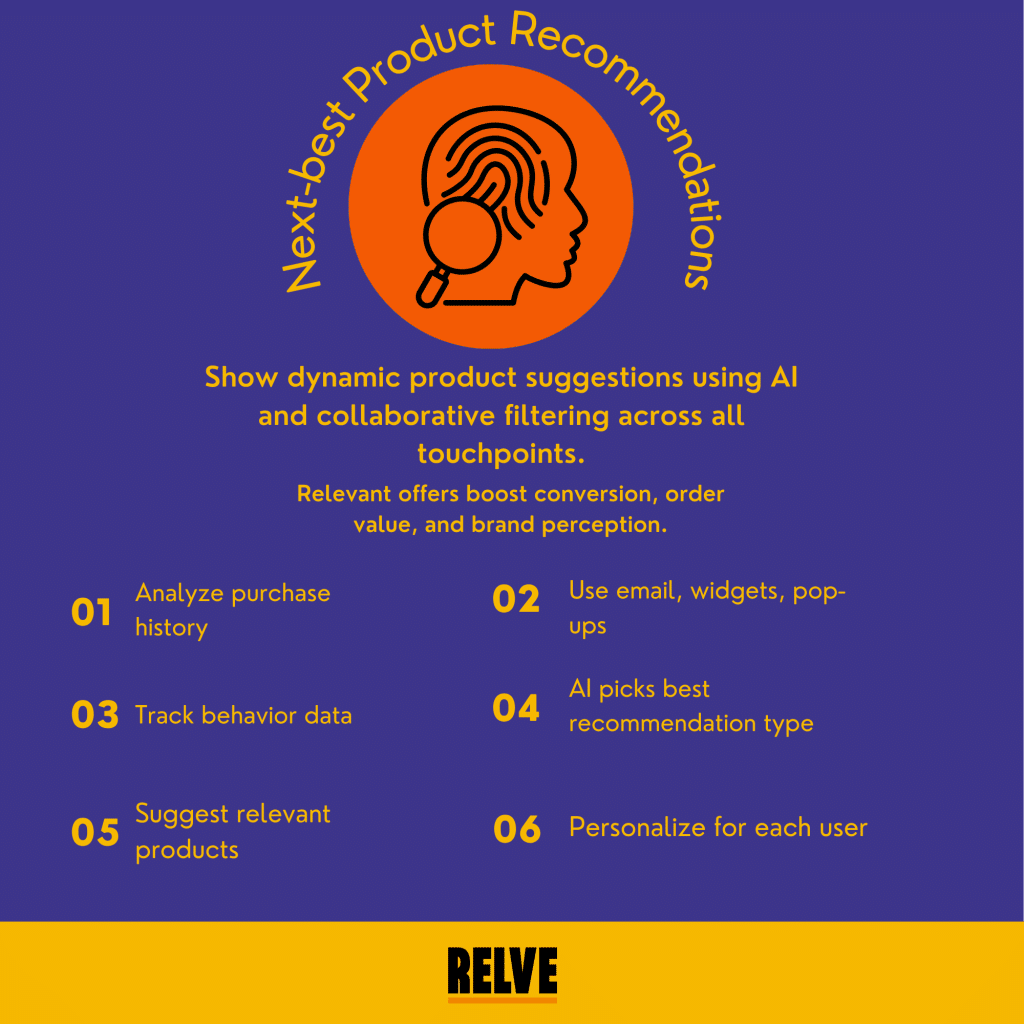
What it is:
The art of presenting dynamic personalized product suggestions across touchpoints using collaborative filtering and AI algorithms.
Why it matters:
Relevant offers not only increase conversion rates but also improve the average order value and brand perception.
How to use CDP insights:
Leverage purchase history and behaviour data to suggest contextually appropriate products via email, homepage widgets, or onsite pop‑ups. AI determines which recommendation type (similar, complementary, or trending) works best for each user.
Example:
A customer buys a Canon DSLR camera from Best Buy. The CDP identifies complementary products like lenses, tripods, or editing software based on:
- Purchase history
- Customer segment
- Browsing patterns
- Personalized follow-up emails and homepage product blocks recommend these “next-best” items.
Industry: Electronics / E-commerce
Platform Feature: AI-powered product recommendation engine.
4. Intelligent Segmentation
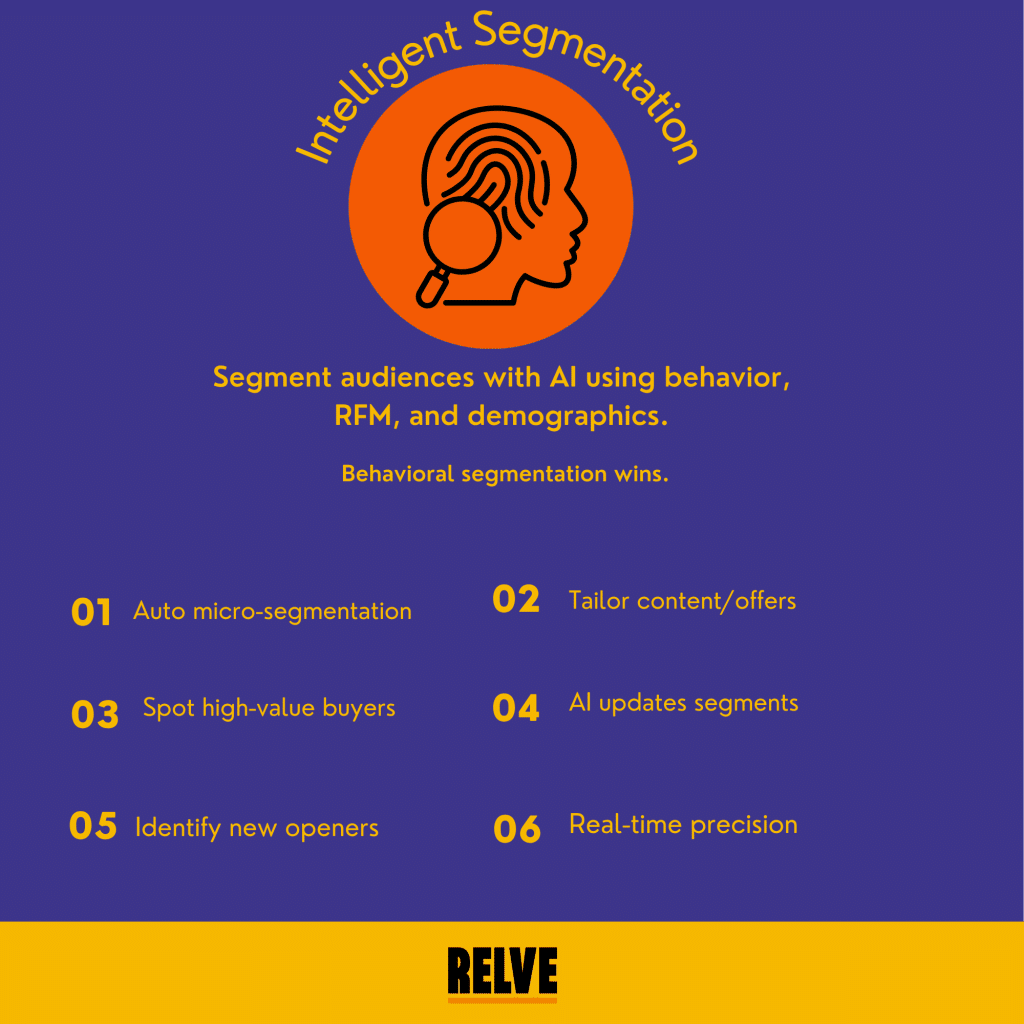
What it is:
The use of AI clusters to segment audiences based on behaviour, purchase recency-frequency-monetary value (RFM), and demographic data.
Why it matters:
Dynamic, behaviour‑based segmentation drives more personalized messaging than static lists.
How to use CDP insights:
Automatically build micro-segments, such as “high-value frequent buyers” or “first-time email openers,” and tailor offers or content to each. AI ensures that segment updates are made in real-time.
Example:
A beauty brand like Sephora uses its CDP to create segments. These customer segments could include examples of:
- “Loyal lipstick buyers”
- “Skincare-first customers”
- “High spenders aged 25–34”
Each segment receives uniquely tailored promotions, email copy, and product recommendations based on behavior, demographics, and preferences.
Industry: Beauty / Retail
Platform Feature: Dynamic audience segmentation with clustering AI.
5. Omnichannel Journey Orchestration
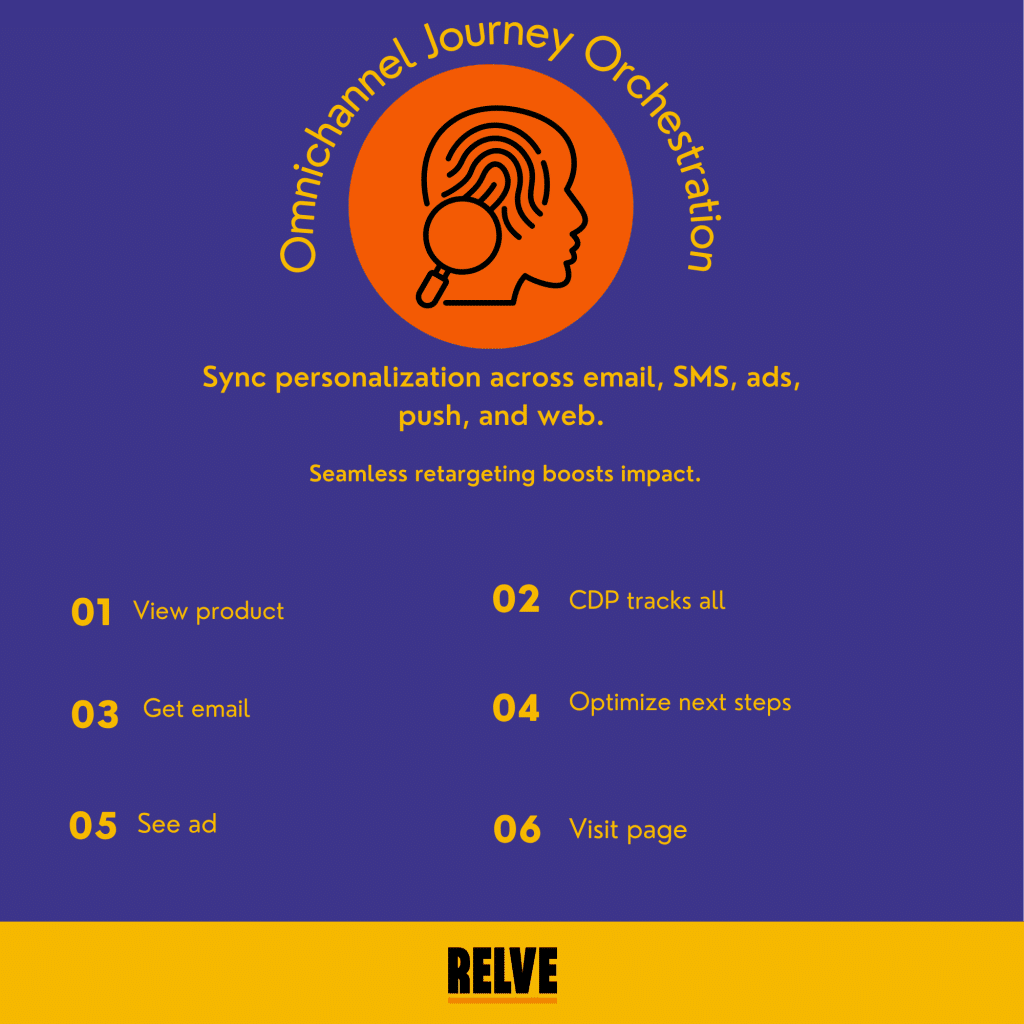
What it is:
The process of delivering coordinated messaging and personalization across email, SMS, social ads, push notifications, and websites simultaneously.
Why it matters:
Customers expect seamless interactions. Seeing an ad about the exact product they viewed onsite reinforces messaging and lowers funnel friction.
How to use CDP insights:
This is but one example of how a personalized cross-channel journey works in action:
A user views products → receives an email → browses the landing page → sees an ad.
The CDP tracks interaction at each and every step to optimize future touchpoints.
Example:
A user clicks on a Facebook ad from a travel agency and is directed to a page for a Maldives vacation.
The CDP builds a journey:
- If no action is taken, send a price drop alert via email
- Retarget them on Instagram
- Show personalized offers in the mobile app
- Display a Maldives trip countdown on the website homepage.
Industry: Travel & Hospitality
Platform Feature: Channel orchestration and journey mapping
6. Winning Back Lapsed Customers
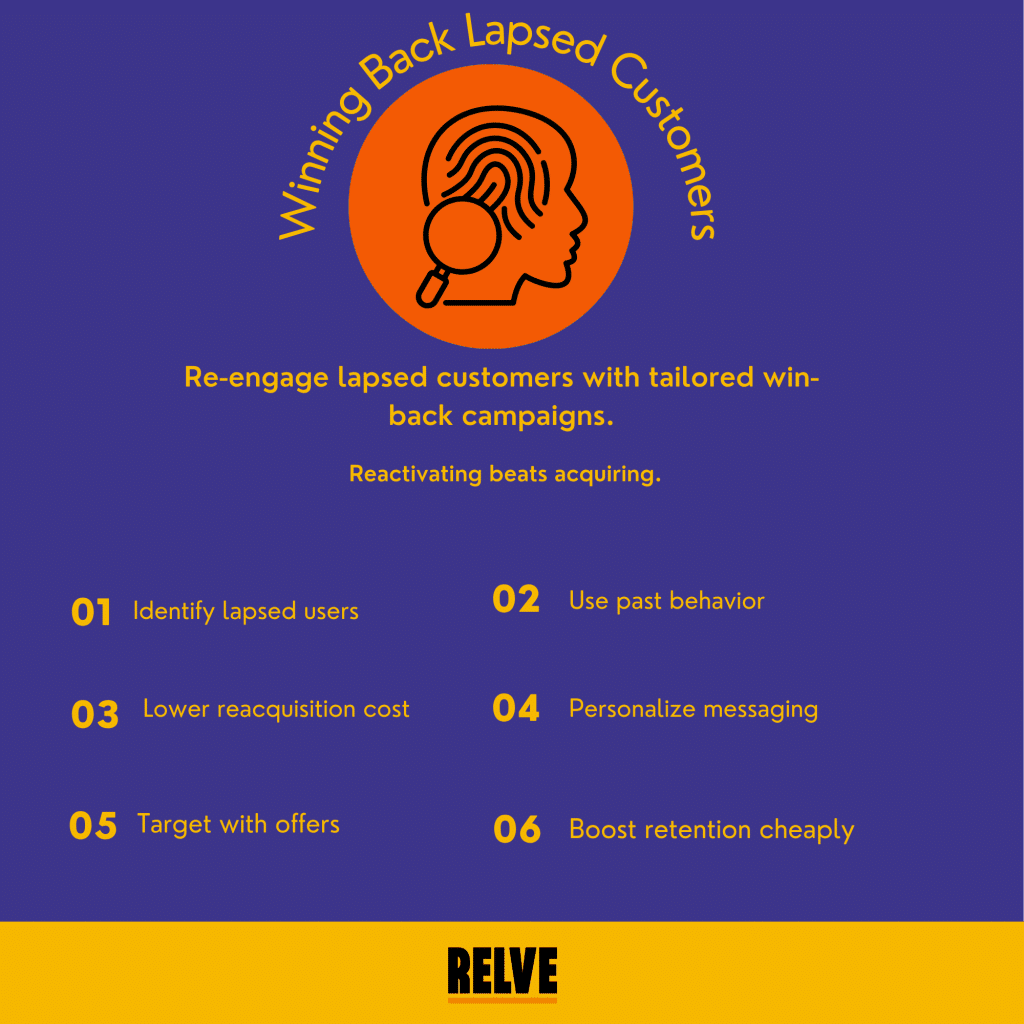
What it is:
Engage customers who haven’t purchased in X days/weeks with tailored “win‑back” campaigns.
Why it matters:
Reactivating lapsed customers is often more cost‑effective than acquiring new ones.
How to use CDP insights:
Define rules (e.g., no purchase in the last 90 days), trigger a multi‑step outreach campaign using personalized offers and content based on past behavior.
Example:
A CDP identifies customers who haven’t purchased from a meal delivery brand like HelloFresh in 6 months or more.
Their Win-Back campaign includes:
- A personalized message: “We miss you, Jamie!”
- $20 off on the next box
- Favorite past meals are pre-selected in the cart.
Industry: Subscription / Food delivery
Platform Feature: Lapse detection with personalized re-engagement flow.
7. Personalized Onsite Experiences
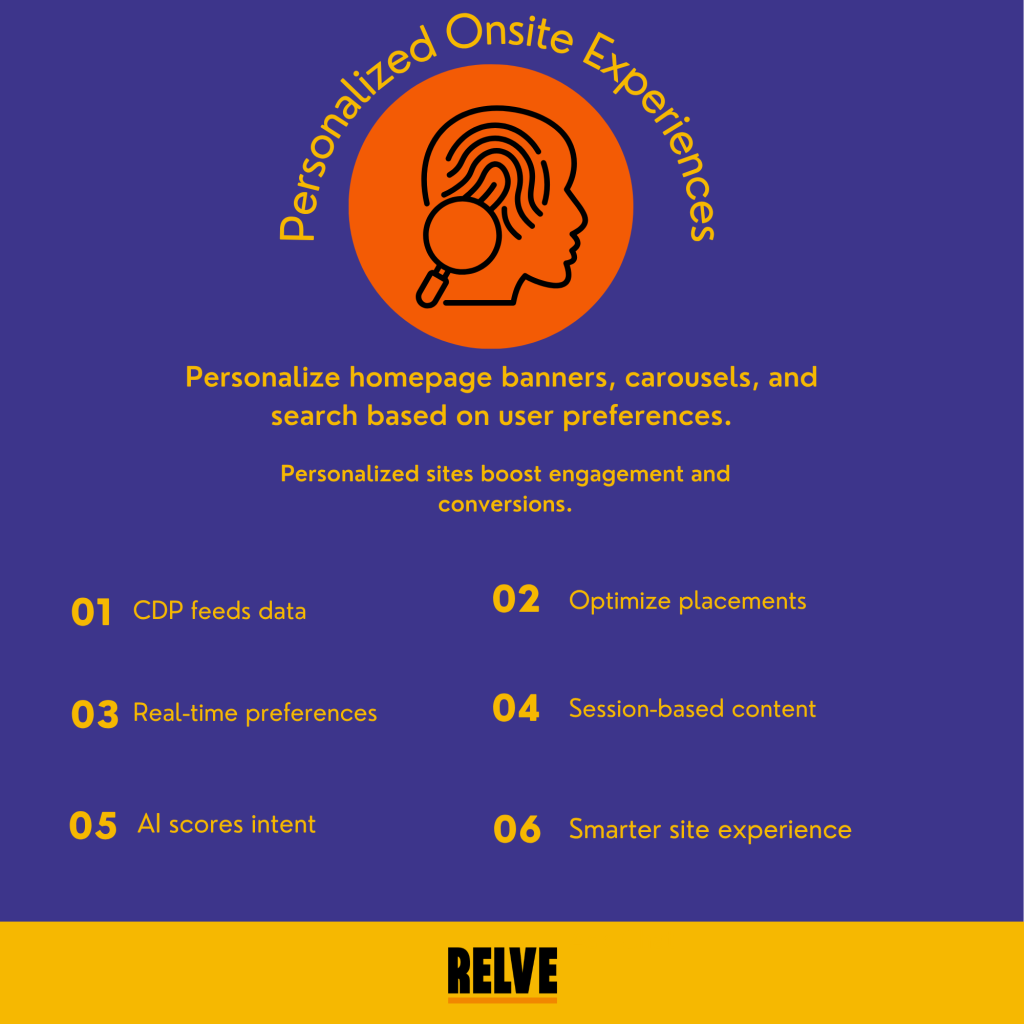
What it is:
Modify homepage hero banners, product carousels, or search results to reflect individual user preferences.
Why it matters:
Personalized site experiences can increase engagement, time spent on site, and conversions by tailoring content to relevance.
How to use CDP insights:
CDP feeds real‑time preferences into your CMS or site builder. AI scores likely intents and optimizes content placements based on user sessions.
Example:
A frequent mobile shopper visits Zara’s website. Based on their browsing and purchase history, the homepage shows:
- A hero banner featuring their preferred clothing category (e.g., “Summer Dresses”)
- Product tiles curated with sizes and colors they typically buy
- A promotion tied to loyalty status
Industry: Fashion / Retail
Platform Feature: Web personalization using real-time data and profile enrichment.
8. Customer Lifetime Value (CLV) Optimization
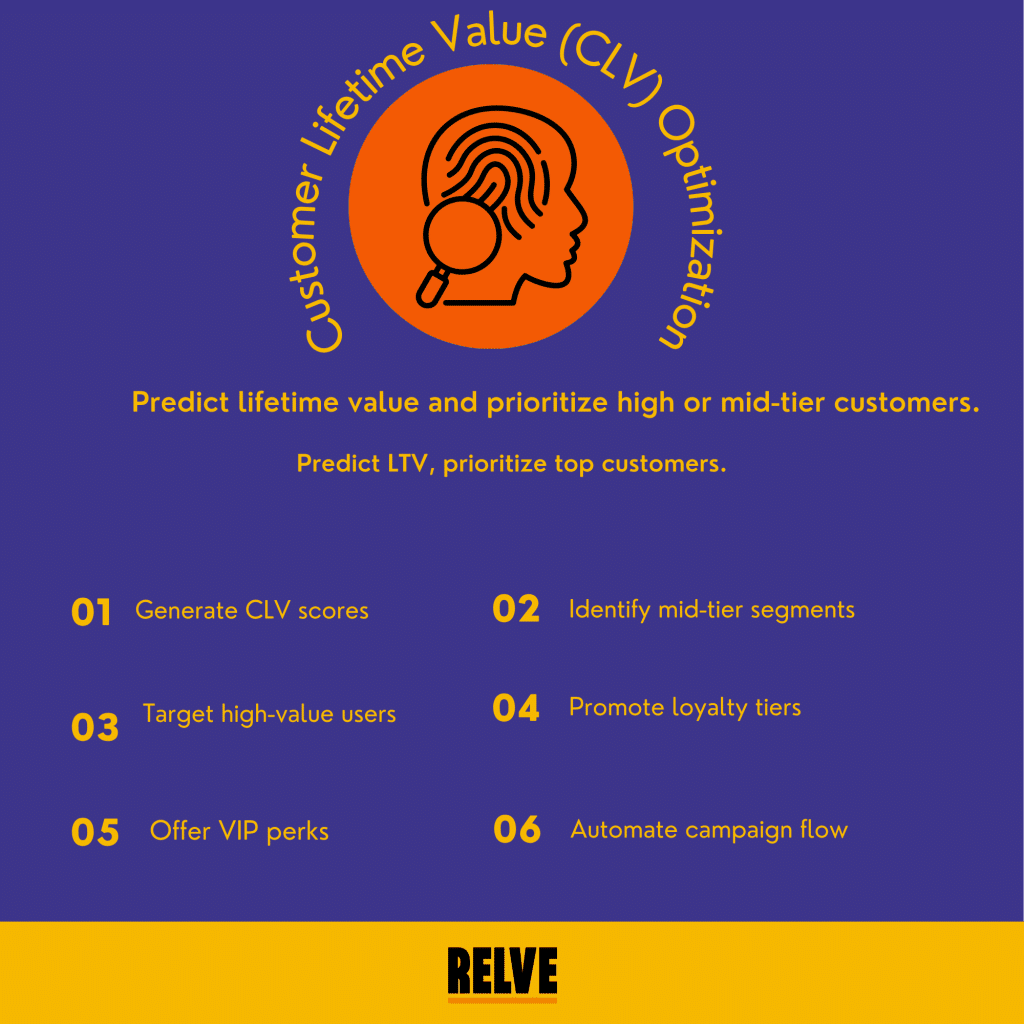
What it is:
Calculate predicted lifetime value using machine learning and prioritize high-value customers or nurture mid-tier segments.
Why it matters:
Focusing marketing spend on high-potential segments improves efficiency and ROI.
How to use CDP insights:
Use to CDP to generate customer lifetime value (CLV) scores and feed them into automated campaigns. These target high-value users with VIP benefits, and invite mid-tier segments to loyalty tiers.
Example:
A CDP at an online furniture store uses machine learning to calculate projected CLV for all customers.
Customers with high predicted value are:
- Given VIP-only early access to new collections
- Offered white-glove delivery services
- Assigned human concierge support
Lower-value customers receive nurturing content and upsell opportunities to improve their CLV over time.
Industry: Furniture / Luxury goods
Platform Feature: Predictive CLV modeling and tiered journey orchestration.
9. AI-Powered A/B/N Testing
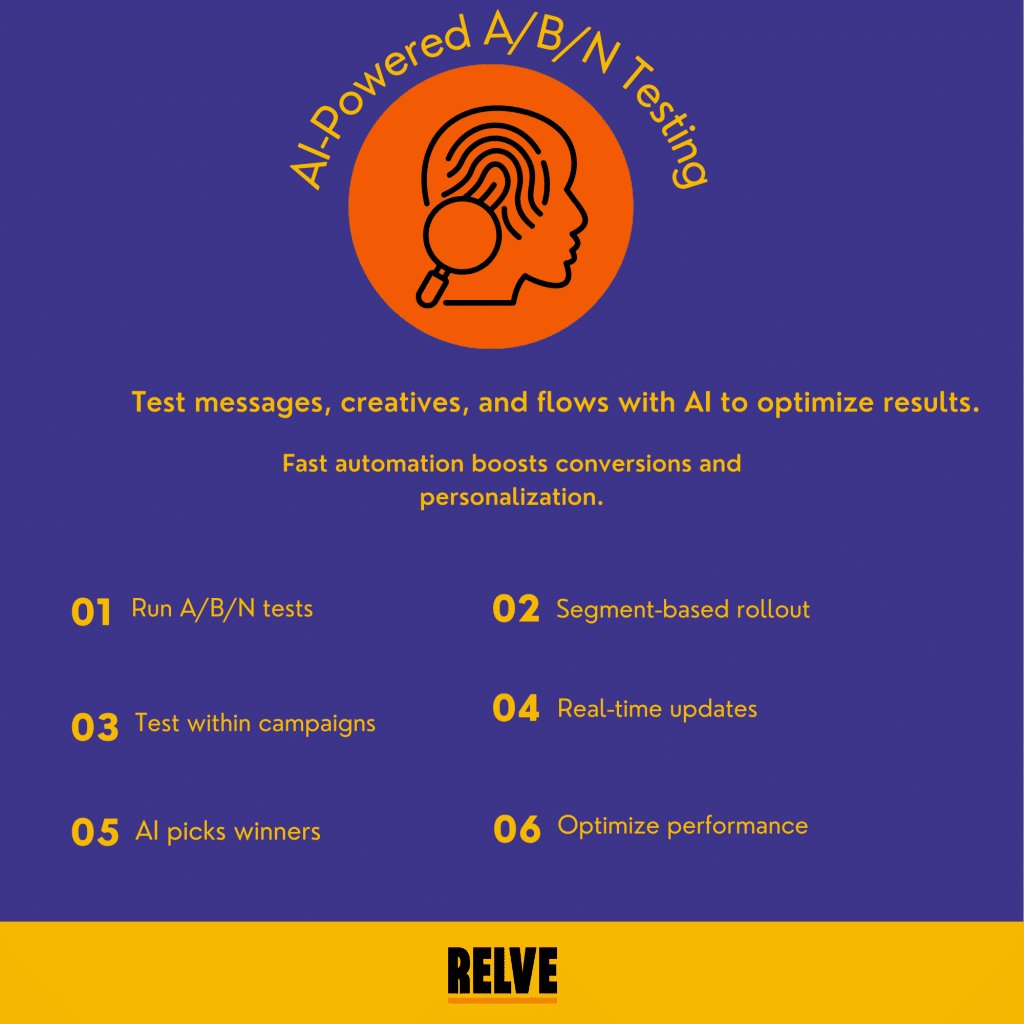
What it is:
Test different messaging variants, product creatives, or flows across segments using AI-optimized testing frameworks to optimize results.
Why it matters:
Automated, high-speed optimization improves conversion rates and personalization efficacy.
How to use CDP insights:
Deploy A/B/N tests within campaigns. AI automatically selects the winning variant for each segment and rolls it out in real-time.
Example:
A fitness app like MyFitnessPal runs an A/B/N test on onboarding emails:
- Variant A: Motivational messaging
- Variant B: Feature-focused walkthrough
- Variant C: User-generated success stories
The CDP’s AI continuously analyzes conversion rates and engagement to determine which variant resonates most with which user segment—and automatically rolls it out accordingly.
Industry: Health / Mobile apps
Platform Feature: Multivariate testing with AI-based winner selection.
10. Cross-Buy & Upsell Campaigns

What it is:
Use purchase history and browsing behaviour to predict complementary items and drive upsells.
Why it matters:
Retailers can increase AOV through smart upselling and attractive package offers.
How to use CDP insights:
If a customer buys product A, trigger a campaign suggesting product B, along with dynamic discounts, across email, SMS, banners, and ads.
Example:
A customer buys a MacBook from Apple’s site.
The CDP instantly recommends:
- AppleCare warranty
- USB-C hub
- iCloud storage expansion
These upsells are timed in the following ways:
- First via order confirmation email
- Then via in-app push during setup
- Finally, remarked on YouTube with a “Bundle and Save” ad.
Industry: Tech / Consumer Electronics
Platform Feature: AI-assisted cross-sell recommendation engine.
CDP Use Cases at a Glance: Benefits, Industries & AI Functions
What can you use CDPs for? This table lists all the benefits, industries, and AI features that you can leverage to gain a huge advantage over your competitors:
| Use Case | Core Benefit | AI Role |
| Real-time Triggered Messaging | Capture intent-driven moments | Real-time analytics & timing |
| Predictive Churn Prevention | Retain high-risk users | Churn scoring/prediction |
| Next-Best Product Recommendations | Increase AOV & relevance | Collaborative filtering |
| Intelligent Segmentation | Fine-tuned personalization | Behavioral clustering |
| Omnichannel Journey Orchestration | Seamless, cross-channel engagement | Timing & channel optimization |
| Winning Back Lapsed Customers | Reactivate dormant users | Campaign timing & incentive AI |
| Personalized Onsite Experience | Boost engagement & conversions | Session-level personalization |
| CLV Optimization | Allocate marketing effectively | Lifetime value modeling |
| AI-Powered A/B/N Testing | Optimize performance dynamically | Auto variant selection |
| Cross-Sell & Upsell Campaigns | Drive revenue through bundling | Complementary product inference |
Conclusion: Integrate AI with Your CDP
AI drives customer data platform use cases – from predictive modelling (such as churn and CLV) to natural language processing (for content customization) and reinforcement learning (for journey orchestration).
A modern CDP equipped with AI capabilities empowers you to:
- Act in real time: Instant triggers based on live behavior.
- Scale personalization: Dynamic journeys for millions of customers.
- Continuously optimize: Automated, data-driven decision loops.
The customer data platform use cases covered in this article demonstrate how AI-powered CDPs are revolutionizing customer experiences. These platforms do more than aggregate data; they transform it into actionable intelligence, enabling marketers to craft meaningful, personalized journeys.
As CDP adoption grows, brands leveraging AI-powered insights will outpace those relying on generic or channel-specific approaches.
